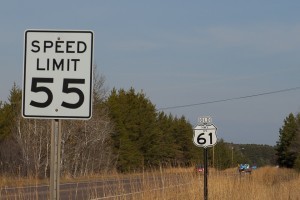Last Updated on: 11th July 2017, 04:18 pm

Unfortunately, the majority of drivers don’t feel that speed limits set with the 85th percentile rule are reasonable. A 2008 study showed that drivers do not associate speed limits with safety. Instead, they tend to worry almost exclusively about getting caught.
This has been largely attributed to the Emergency Highway Conservation Act of 1974. When the OPEC oil embargo sent gas prices soaring, President Nixon signed the bill to establish a 55 mph speed limit on all four-lane divided highways. The goal was to reduce gas consumption (which it did, but only by a mere 1%), but most drivers saw it as an affront to their personal freedom. It was repealed in 1995, but the damage was done: speed limits became associated with overregulation and drivers began to ignore them.
Even when speed limits are increased, most drivers simply drive at the speed they are comfortable. During an 18-month study along the New York Thruway, the speed limit was increased from 55 mph to 65 mph. The average speed along the road remained the same, at 68 mph, regardless of the change. A separate national study conducted by the Federal Highway Administration (FHWA) found that the average speeds on roads remained constant regardless of lowering or increasing the speed limit; drivers did whatever they wanted.
In addition, research supports the notion that obeying speed limits does not necessarily correlate to safety. According to the Institute of Transportation Engineers, those driving 10 mph slower than the prevailing speed are six times more likely to be involved in an accident than someone going 10 mph over the limit. However, there is no clear consensus regarding this finding and the sheer ubiquity of speeding makes it difficult to isolate as a factor in the frequency of accidents.
Are speed limits useless? It’s difficult to say with any certainty. What is clear, according to the FHWA, is the laws of physics, which prove beyond doubt that speed and crash severity are inextricably linked. Even if speed limits don’t seem rational, they’re still a good idea.
A conviction for speeding costs at least $150 plus a mandatory surcharge of up to $93, and carries three points on your license. It can also increase your insurance premiums by hundreds of dollars. If you or a loved one has been caught speeding, it is imperative that you consult an attorney to help you avoid the costs associated with a ticket. The lawyers of the Rosenblum Law Firm are skilled New York traffic ticket attorneys who are experienced in handling tickets for speeding as well as other driving-related offenses. Call 888-203-2619 or email the Rosenblum Law Firm today for a free consultation about your case.
As the founding attorney of Rosenblum Law, Adam has built a firm that prioritizes client success and legal excellence. His leadership and vision have established Rosenblum Law as a premier legal practice for traffic and criminal defense, ensuring that clients receive the highest level of advocacy and support.
